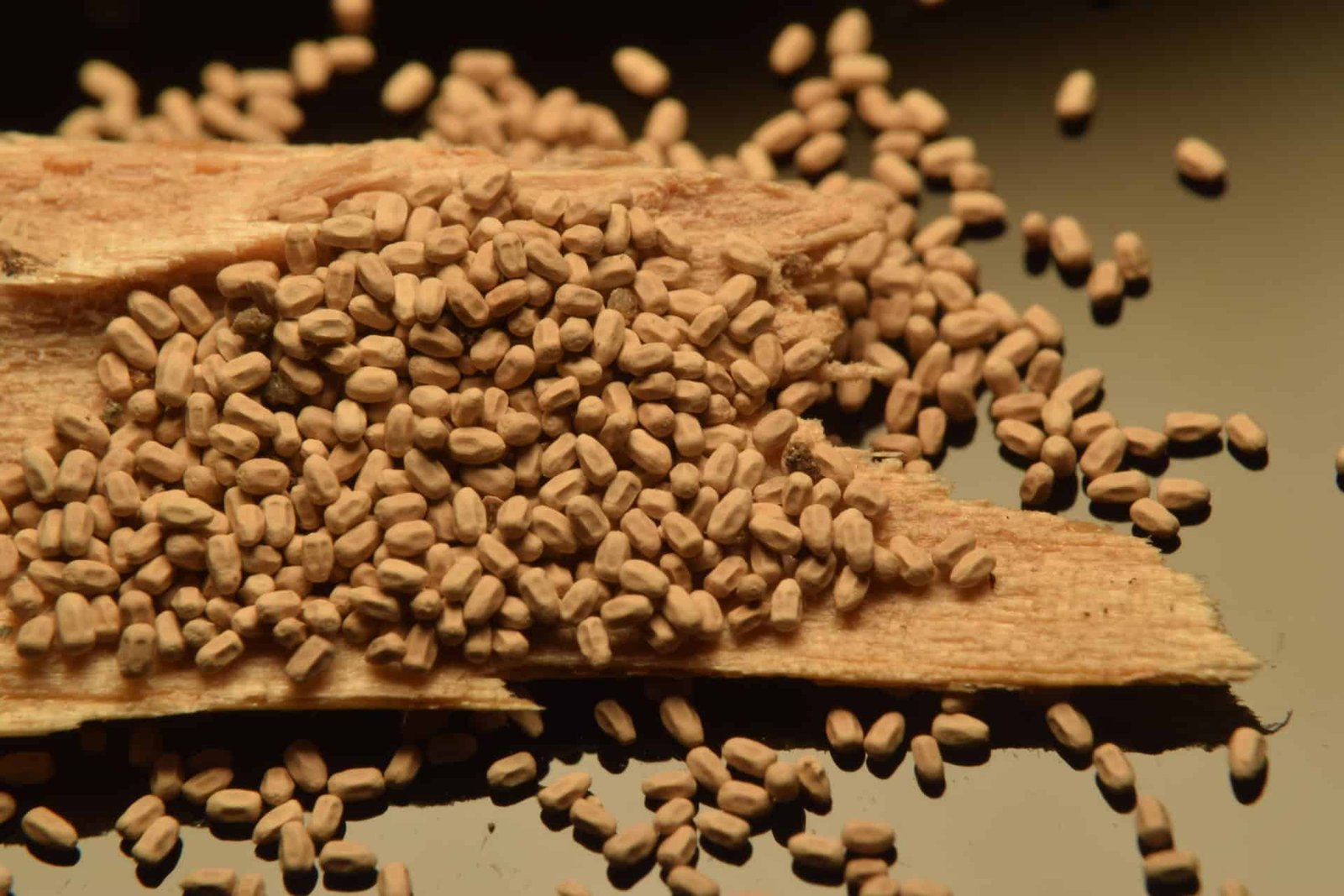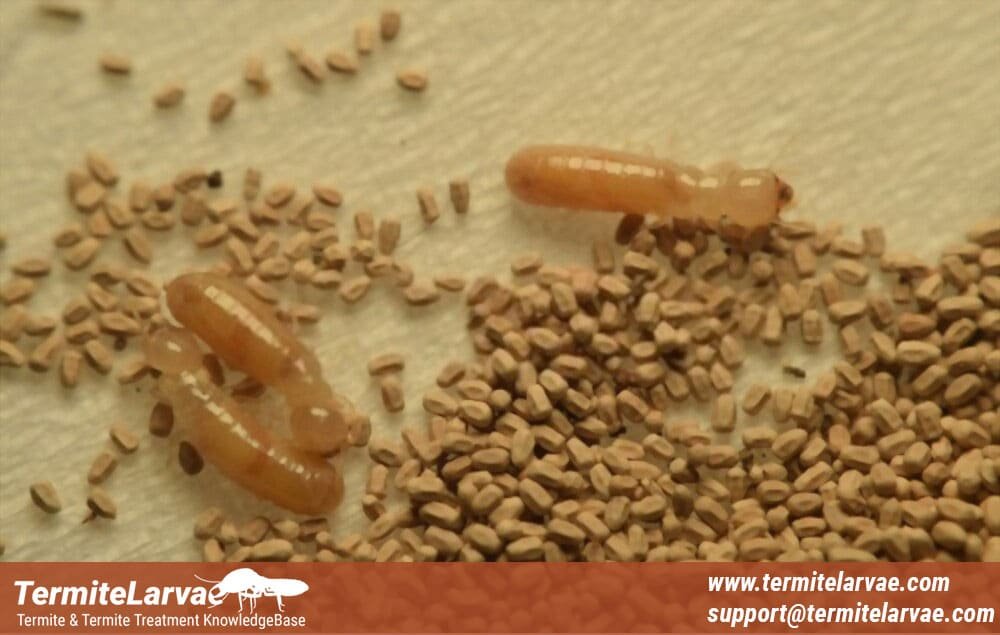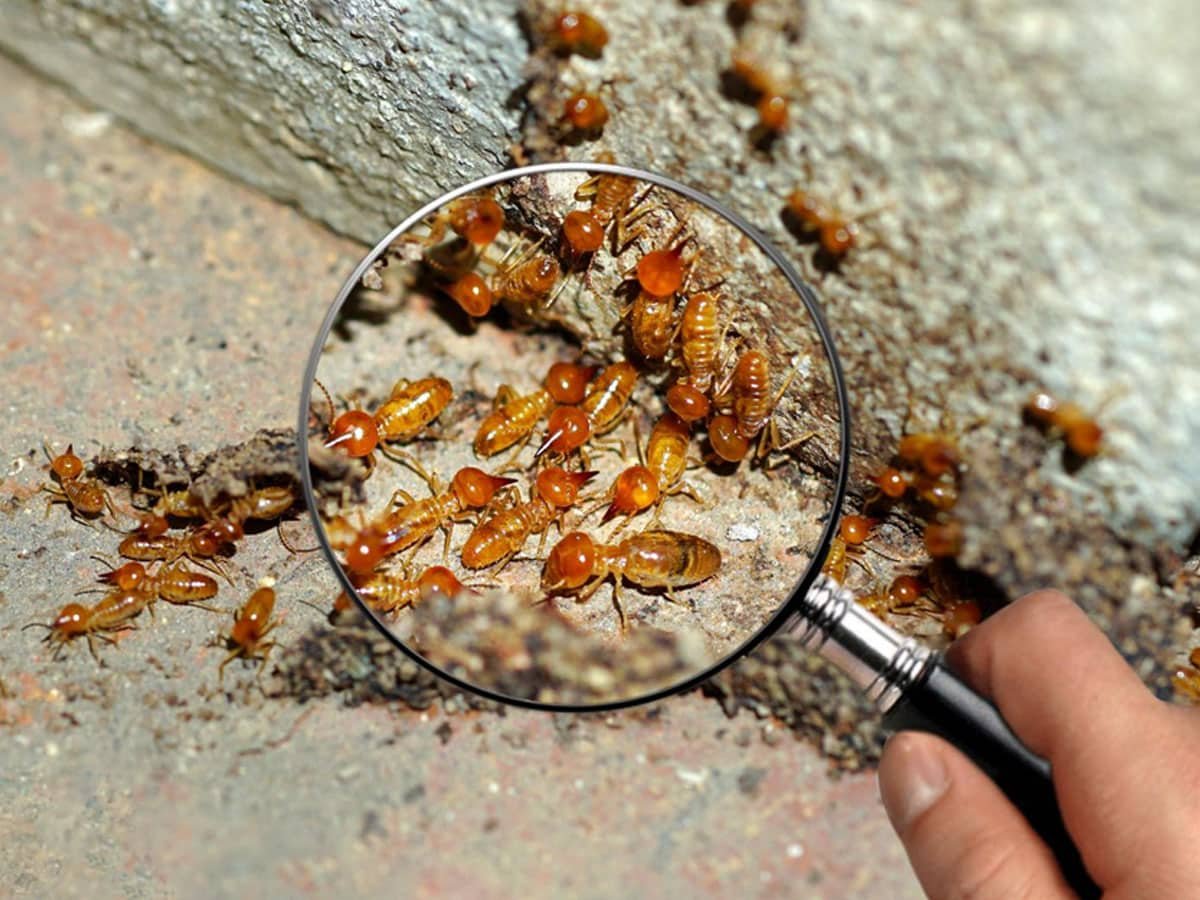Termites, often unseen architects of the natural world, play a significant role in our ecosystem. However, when these creatures invade human habitats, they can become a serious nuisance, and identifying their presence becomes crucial. A key indicator of termite activity is their droppings, commonly known as ‘frass.’
This article delves deep into the world of termite droppings, uncovering everything you need to know. From identifying these minute yet telling signs to understanding the implications they hold for your home, we explore the nuances of termite infestations. Our journey into this subject is backed by thorough research, ensuring that you receive accurate, reliable information.
Importance of Identifying Termite Droppings
Recognizing termite droppings is essential for early detection of a termite infestation. These droppings, often the first visible sign of termites, can help homeowners and professionals take timely action to mitigate damage. Termite infestations, if left unchecked, can lead to significant structural damage, resulting in costly repairs.
Understanding the appearance, types, and implications of termite droppings can empower homeowners to protect their property effectively. This knowledge is especially crucial for those living in areas prone to termite activity, where early detection can prevent widespread damage.
Identifying Termite Droppings
Termite droppings, or frass, are small granules that can be mistaken for sawdust or sand. Their appearance varies slightly depending on the termite species. Generally, these droppings are wood-colored, owing to the termites’ wood-based diet, and they are typically about 1mm in size. Their shape is often granular or hexagonal, hinting at their unique origin.
Appearance of Drywood Termite Droppings
Drywood termite droppings are distinct in their appearance. Unlike their subterranean counterparts, drywood termites live within the wood they consume and expel their droppings out of their nests.
These droppings are oval-shaped with rounded ends and six concave sides, resembling tiny wood pellets. Their color ranges from light beige to dark brown, reflecting the type of wood the termites are feeding on.
Color Variations
The color of termite droppings can vary greatly. It primarily depends on the type of wood the termites are consuming. For instance, droppings from termites feeding on darker woods will be darker, and vice versa. This color variation can be a subtle indicator of the specific area of infestation within a structure.
Resemblance to Grains of Sand or Sawdust
One of the challenges in identifying termite droppings is their resemblance to grains of sand or sawdust. This is particularly true for drywood termite droppings. The key difference is in the uniformity and shape of the droppings – termite frass is more consistent in shape and size compared to sawdust.
Visual Differences Between Termite Excrements (Frass) and Sawdust
To the untrained eye, termite frass can easily be mistaken for sawdust. However, upon closer inspection, one can notice that termite droppings are more pellet-like, while sawdust is irregularly shaped and finer. This distinction is crucial in accurately identifying a termite infestation.
Different Types of Termite Droppings
The droppings of different termite species vary slightly, providing clues to the type of infestation.
- Drywood Termite Droppings: As mentioned, these are pellet-shaped with six concave sides and are expelled from the wood where termites reside.
- Subterranean Termite Droppings: These termites use their droppings to build their nests and mud tubes. Their droppings are less likely to be found as discrete pellets and more commonly seen as part of the mud-like material in their tubes.
Distinguishing Termite Droppings from Other Substances
Differentiating termite droppings from those of other insects is crucial in identifying the correct pest problem. While termite frass is granular and pellet-like, other insect droppings, such as those from cockroaches or rodents, are often more irregular in shape and size.
Furthermore, the composition of termite droppings is primarily wood, unlike other insects whose droppings may contain various organic materials.
Carpenter Ant Droppings vs. Termite Droppings
Carpenter ant droppings differ from termite droppings in both composition and appearance. While termite droppings are exclusively wood-based, carpenter ant frass contains wood fragments mixed with parts of dead ants and other insects. This results in a less uniform and more fibrous appearance compared to the more granular termite frass.
Termite Droppings vs. Sawdust
Sawdust is often a byproduct of woodworking or construction activities and can be mistaken for termite droppings. The key difference lies in the texture and consistency. Sawdust is typically finer and lacks the uniformity and hard texture of termite droppings. Additionally, sawdust piles are usually found near recent woodwork, whereas termite droppings are found near termite nests and entry points.
Ant Droppings vs. Termite Droppings vs. Saw Dust
Ant droppings are generally less uniform than termite droppings and contain more varied materials. Termite droppings, in contrast, are consistent in shape and size. Sawdust, as mentioned, is finer and more inconsistent in texture. Understanding these differences is crucial for accurate pest identification.
Termite Droppings vs. Termite Eggs
Distinguishing between termite droppings and eggs is important. Termite eggs are tiny, translucent, and oval, often found in clusters. In contrast, termite droppings are darker, solid, and granular. Confusing the two could lead to a misunderstanding of the termite life cycle and infestation stage.
How to Differentiate Between Them?
To differentiate between termite droppings and eggs, look for color and texture. Droppings are dark and pellet-like, while eggs are lighter and more jelly-like. Location also plays a role; eggs are typically found deep within the nest, whereas droppings are found along termite travel paths.
Signs and Implications of Termite Droppings
Finding termite droppings in or around your property is a significant indication of an active termite infestation. These signs are often more apparent in cases of drywood termite infestations, where droppings are expelled from the wood they consume.
Finding Termite Droppings: A Sign of an Infestation?
Yes, discovering termite droppings is a clear sign of an infestation. These droppings usually accumulate near termite entry points, window sills, door frames, or underneath wooden structures like beams and furniture. Recognizing these signs early can help prevent extensive damage.
Common Places to Find Termite Frass
Typically, termite frass can be found in locations where termites have been feeding. Common places include under wooden structures, near cracks in walls, and around baseboards. Drywood termites often leave droppings in piles, making them easier to spot.
Termite Frass, Sawdust, or Coffee Grinds?
Termite frass can sometimes be confused with sawdust or even coffee grinds due to its granular nature. However, termite droppings are usually darker and harder than sawdust and lack the aromatic scent of coffee grinds. Paying attention to these subtle differences is essential for accurate identification.
What Does It Means to Find Termite Droppings?
Finding termite droppings inside your home or property is a warning sign of termite activity. It indicates that termites are actively feeding and possibly nesting within the structure, which can lead to significant structural damage over time.
Suspected Water Damage
In addition to termite droppings, signs of water damage, such as discolored or sagging wood, can also indicate termite activity. Termites are often drawn to moist, decaying wood, making water-damaged areas a prime target for infestation.
Mud Tubes
Particularly for subterranean termites, the presence of mud tubes along the foundation or walls of a building is a critical sign. These tubes are used by termites to travel and protect themselves from external elements.
Termite Wings
Discarded termite wings near windows, doors, or other entry points are another sign of termite infestation. These wings are often left behind after termites swarm to start new colonies.
Kick Out, or Exit Holes
In the case of drywood termites, small holes in wooden structures, known as kick-out holes, are used to expel droppings. Finding these holes with accompanying piles of frass is a clear indication of drywood termite activity.

Health and Safety Concerns
One of the common questions homeowners have is about the potential health risks associated with termite droppings. It’s important to understand these concerns to address them effectively.
Non-Harmful Nature
Termite droppings, while a nuisance, are generally not harmful to humans. Unlike rodent droppings, which can carry diseases, termite frass does not pose significant health risks. However, it’s always advisable to handle it with care, especially for those with respiratory issues or allergies.
Are Termite Droppings Dangerous?
From a health standpoint, termite droppings are not considered dangerous. They do not contain toxic substances and are not known to transmit diseases. However, in large quantities, they can contribute to indoor air pollution and may exacerbate asthma and allergies in sensitive individuals.
Can Termite Frass Make You Sick?
Direct contact or inhalation of termite droppings is unlikely to make you sick. Nonetheless, as with any pest-related debris, it’s prudent to manage and clean it up promptly and safely, particularly in indoor environments, to maintain good air quality.
Behavior and Habitat of Termites
Understanding how different termite species deal with their droppings can provide insight into their behavior and help in identifying infestation types.
Drywood Termites Burrow Deep and Don’t Like to Leave
Drywood termites live and feed within the wood they infest. They create kick-out holes to push their droppings out of their nests. This behavior helps in keeping their living area clean and also signals their presence.
Subterranean Termites
Subterranean termites, in contrast, use their droppings mixed with saliva and soil to build their nests and mud tubes. These structures are critical for their survival as they provide moisture and protection.
Termites Defecate Near Their Nest
Both drywood and subterranean termites defecate near their nests. In the case of drywood termites, this leads to visible piles of frass, whereas, for subterranean termites, the droppings are incorporated into their mud structures.
Termites Are Very Clean Insects
Despite being pests, termites are inherently clean creatures. They meticulously manage their nests and colonies, which includes the disposal or utilization of their droppings.
Habitat and Infestation Signs
- Where to Find Drywood Termite Droppings: Look for piles of frass near wooden structures, along walls, or in crawl spaces.
- How to Detect Subterranean Termites: Look for mud tubes on exterior walls, crawl spaces, and near the foundation of buildings.
Dealing with Termite Droppings
Once termite droppings are identified, it’s important to address the cleanup process effectively and safely.
How to Clean Up Termite Droppings?
- Safety Precautions: Wear gloves and a mask to avoid direct contact and inhalation.
- Vacuuming: Use a vacuum cleaner with a HEPA filter to collect the droppings without spreading them into the air.
- Disposal: Safely dispose of the vacuum bag or contents in a sealed bag.
- Cleaning the Area: Wipe down the area with a damp cloth to remove any residue, and then clean with a mild detergent.
Tips for Getting Rid of Drywood Termite Droppings
- Regular Inspection: Check regularly for new droppings to monitor ongoing termite activity.
- Professional Advice: Consult a pest control expert for the best ways to prevent reinfestation.
Contacting Professionals
In many cases, the presence of termite droppings warrants professional intervention.
Professional Inspection Recommended
A professional pest control expert can provide a thorough inspection to determine the extent of the infestation, identify the termite species, and recommend a course of treatment.
Contact a Pest Control Professional at the First Sign of Termites
Prompt action is crucial. Contacting a professional at the first sign of termites, such as the discovery of droppings, can prevent extensive damage and save significant costs in repairs.
Prevention and Control
Preventing termite infestations is key to avoiding the associated damages and costs.
- Check for Leaks: Moisture attracts termites, so repair any plumbing leaks promptly.
- Clean Gutters: Ensure gutters are clean to prevent water accumulation near the foundation.
- Fill In Cracks and Crevices: Seal cracks in the foundation and walls to block entry points for termites.
- Be Careful with Mulch: Avoid using mulch too close to the foundation, as it can provide a habitat for termites.
- Get Regular Inspections: Schedule annual inspections with a pest control professional.
Termite Control Methods
- Treatment Options: Various treatments are available, including baiting systems, chemical treatments, and physical barriers.
- Termite Control in Specific Regions: Adapt control methods to the specific termite species and climatic conditions of your area.
Miscellaneous Information
Unlike many animal droppings, termite poop generally does not have a strong odor. This is due to its primarily wood-based composition.
While it may sound humorous, termites do produce methane gas as part of their digestive process. However, this is not the same as farting in the traditional sense.
Surprisingly, termite droppings can be used as a modest form of fertilizer as they contain decomposed wood, which adds organic matter to the soil.
Final Thought
In summary, termite droppings, or frass, are a significant indicator of termite activity. Understanding their appearance, implications, and the appropriate response is essential for homeowners.
Regular inspections and preventive measures play a key role in managing termite infestations. While termite droppings are not harmful to humans, they can indicate serious structural issues that need to be addressed.
FAQs
What are the signs that the droppings I found are from termites?
Termite droppings, or frass, are small, pellet-shaped, and often wood-colored. They are typically found in small piles near wood structures. Unlike sawdust, they have a more uniform shape and size.
Can termite droppings indicate the type of termite infestation?
Yes, the appearance of termite droppings can indicate the type of termite. Drywood termites leave behind hard, pellet-like droppings, while subterranean termites use their droppings mixed with soil to build mud tubes.
Are termite droppings harmful to humans?
Generally, termite droppings are not harmful to humans. They do not carry diseases like some other pests’ droppings. However, in large quantities, they can contribute to dust and might irritate allergies or asthma.
How should I clean up termite droppings?
Wear protective gloves and a mask. Use a vacuum with a HEPA filter to collect the droppings, then wipe the area with a damp cloth and clean with a mild detergent. Dispose of the vacuum contents in a sealed bag.
What should I do if I find termite droppings in my home?
Finding termite droppings is a strong indicator of an infestation. It’s advisable to contact a professional pest control service for a thorough inspection and treatment plan to address the infestation effectively.











One Response
Visitor Rating: 5 Stars